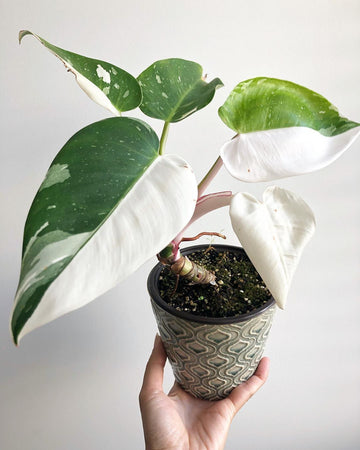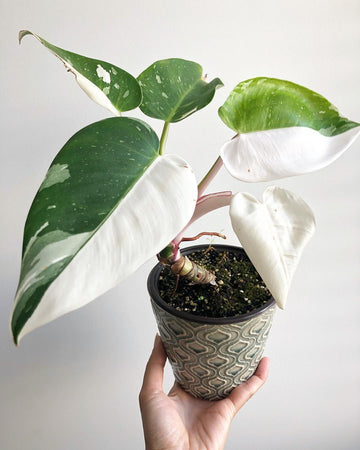The Philodendron genus, part of the Araceae family, is native to tropical America and comprises over 400 species. With such diversity, it’s no surprise that many of these varieties share common features. To the untrained eye, the Philodendron White Princess, Philodendron White Knight, and Philodendron White Wizard may appear quite similar, making them difficult to differentiate. Referred to as the "Triple Crown" in the houseplant community, all three varieties boast similarly shaped green leaves with white markings and follow comparable growth patterns. But what sets them apart?
To answer this question, a closer examination of each plant is necessary, focusing on their variegation patterns and the subtle differences that distinguish them. If you're unsure which plant you have or which one you're looking for, the key often lies in the stem, along with an analysis of leaf shape and variegation style. It's advisable to conduct this assessment on more mature specimens, as the juvenile forms of all three plants are quite similar, which is how they're typically sold. Ideally, having all three plants side by side will make the comparison much easier—this guide is designed to help with exactly that!
Let’s break down the distinguishing features of each variety, including color, variegation type, leaf shape, and more:
Philodendron White Wizard

To identify a true Philodendron White Wizard, check out the stems of your plant. There will never be any colour other than green and white present on the Wizard so if you see any pink, burgundy, or brownish-purple anywhere, you are looking at one of the other varieties! The completely green stems will sometimes be edged in white or contain stripes of white variegation on the stem itself, even the cataphylls could have some white on them, but no other colours should be present. Even though it has the least amount of colouring, in both variegation and variety of colours, every white patch that the Wizard produces will make quite the bold and beautiful statement.
This is probably the least known of the trio based on the fact that it has been the most difficult to find. It is also the fastest-growing variety, developing the biggest and roundest leaves, so it should be quite easy to spot! As for its colouring, the bright green leaves may develop white variegation that typically presents as large patches, otherwise known as sectoral variegation, and is very rarely speckled or splashy, making a stark and striking contrast.
Philodendron White Princess

Known as the sister plant to the Philodendron Pink Princess, the Philodendron White Princess has probably been the most widely available variety of the Triple Crown. This is due in part to its proximity to the Pink Princess and the fact that it grows and looks very similar to her. With a slightly more compact growth habit, the White Princess has longer and slightly thinner leaves than the other two varieties. As the plant matures, these leaves may become more rounded but they will always remain a bit pointer. When it comes to colouring, its variegation is mostly white and typically splashy but there can be patches as well, leaving an intricate design unique to each leaf.
To confirm whether you have a White Princess Philodendron, take a close look at the stem. If it’s a White Princess, you'll notice bright green stems adorned with hints of pink and/or white. Another clue can be found in the cataphylls—modified leaves that protect the emerging leaves along the stem. On the White Princess, these cataphylls will display a striking mix of white, pink, and green, often creating a candy-cane effect when viewed up close. As this is the only variety with such vibrant pink hues, identifying a White Princess from a distance should be a breeze!
Philodendron White Knight

Last, but certainly not least, is the Philodendron White Knight, which stands out for producing the most color, especially on its stems. The deep purple stems create a striking contrast with the vibrant green leaves, which are adorned with white variegation. While the stems may sometimes appear more burgundy, they will never be green, making it easy to distinguish a White Knight from a White Princess or White Wizard. The White Knight is also a climber, and with the proper support, it will grow upwards, developing purple stems and petioles (the part of the plant connecting the leaf to the stem). In some cases, you may even see white on the cataphylls!
As your plant climbs, its leaves will grow larger and take on a more rounded shape, smaller than those of the White Wizard but larger than the White Princess. Each leaf may exhibit variegation, but the exact type will depend on the plant's genetics, growing conditions, and care routine. Be prepared for some occasional inconsistency in the variegation, but that’s part of the charm! When variegation does appear, it can be quite dramatic, with large white patches, splashy patterns, or even constellation-like designs. Your plant may also alternate between all-white or all-green leaves—each new leaf is a surprise! A houseplant that keeps you guessing is undoubtedly one of the most exciting to have.





